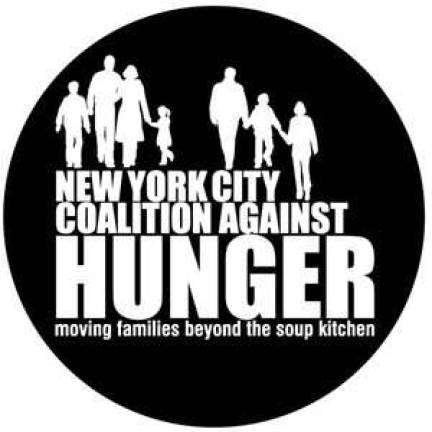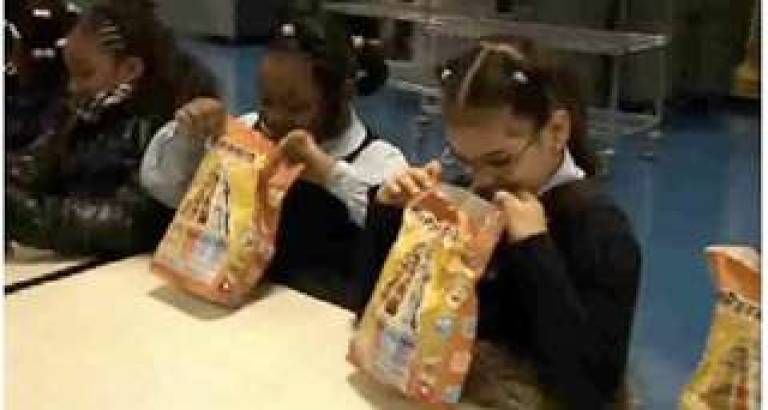Thinking Beyond the Food Drive


The NYC Coalition Against Hunger promotes innovative ways to treat the city's major hunger problem
For many New Yorkers-and Americans in general-when they think of feeding the hungry, they think of scrounging through their pantries for canned goods to donate to food banks or helping serve food at a shelter over the holidays. And therein lies the problem, says the New York City Coalition Against Hunger (NYCCAH). While these are good ways to help out, they are far from the best or more effective ways to beat hunger.
At a conference and training session at Barnard College last week, NYCCAH and a number of other nonprofits discussed productive ways to target the major hunger problem in New York City at its very root.
For one, explained Louise Feld, senior policy advocate at Citizens' Committee for Children, we need to become more familiar with the face of hunger in the city.
"A lot of volunteers go to the soup kitchen on Christmas because that's all they really think of when they think of hunger," said Feld. "We can better engage volunteers by educating them on what the issue looks like."
"We equate hunger with homelessness," she added. "It's not just the person on the subway asking for food. The vast majority of people [who are hungry] have homes they are struggling to keep."
Feld explained low income people affected by hunger often forgo food purchases to pay rent, utilities or for Metrocards to get to their jobs, and then feel judged for unhealthy food choices which are often more affordable.
Many teachers are not even aware the children in front of them in their classrooms are going hungry.
NYCCAH and its affiliated nonprofits stressed the importance of concrete solutions. One program the groups promoted is the proposed Breakfast in the Classroom program.
Currently, all children in public schools in the city are eligible for free breakfast before school, but many do not engage with this resource due to time constraints or perceived stigma by others. Decisions about the program are also made on a school-by-school basis rather than across districts, which makes the implementation process slow and incremental.
Another positive solution is financial donations to food banks and similar organizations.[](http://nypress.com/wp-content/uploads/2013/04/Food-Drive-JPEg.jpg)
According to Assembly Member Linda Rosenthal, "People want to personally serve the food and that's a component, but the pantries need money so they can buy in bulk, buy what is fresh and don't have to be dependent on what people find in their homes."
Rosenthal also noted there is a greater sense of dignity and empowerment in going to a pantry and being able to choose the food one wants.
James Arena-DeRosa, the Northeast regional administrator of the USDA Food and Nutrition Service, said New York kids affected by hunger are hit especially hard during the summertime.
"New York runs some of the biggest summer programs in the country," said Arena-DeRosa. "But to reach more kids we need to reevaluate our methods."
"Thirty million kids get school lunch and 20 million get school breakfast-in the summer those numbers plummet," he added.
During the school year, 80 percent of public school children are eligible for free or reduced price lunch.
Arena-DeRosa also noted kids in the city are too disconnected from their food, and must be better educated about self-reliance and what to eat.
Borough President Scott Stringer said, "When I becameBP, I thought about representing the wealthiest people in the world but I wanted to help the ones who were really struggling. There are so many people in the richest borough who suffer every day."
"It doesn't help to tell people what to do," added Stringer. "It helps to ask people what they need. We want our children to eat healthy but then we don't have farmers' markets or community food banks [in East Harlem]. We also have to think strategically about how to use our rooftops."
In a conference breakout session on hunger policy and volunteer advocacy efforts, Triada Stampas, the senior director of government relations at the Food Bank for New York City, said those who vote in city elections are disproportionately not representing those who suffer from hunger.
Stampas said we need to urge more democratic participation in the democratic process, which is why her group encourages voter registration at soup kitchens and food banks to educate people and allow them to take more control in the election process. In turn, her group informs government hopefuls who in the district will be voting and what is important to them.
"We tell candidates that in their district we are doing voter registration at food pantries," said Stampas.
The speakers also pointed to the bipartisan support for cutting food stamp benefits by 10 percent by November, which they say would be a dramatic cut for those who already struggle to get by. The funding to pay for healthier school meals in 2010 came out of future food stamp funding, according to Stampas, and President Obama promised he'd put the funds back, though no serious commitment has been made at this time.
"No one has made Obama expend political capital to prevent those cuts," said Stampas. "That's where advocacy comes in."
"The hunger cliff will go into effect unless Congress takes some action," she said, for which she holds the President partially responsible.
Stampas and others urged volunteers to participate in voter registrations and also get on the phone with members of Congress and elected officials.
Above all, noted Stephanie Shin, a speaker who has experienced issues with hunger firsthand, we have to work to get rid of the prejudice surrounding hunger in the city.
"This can happen to anybody," said Shin. "It can happen to you, your friends or your kids and some people just don't know where to get help."